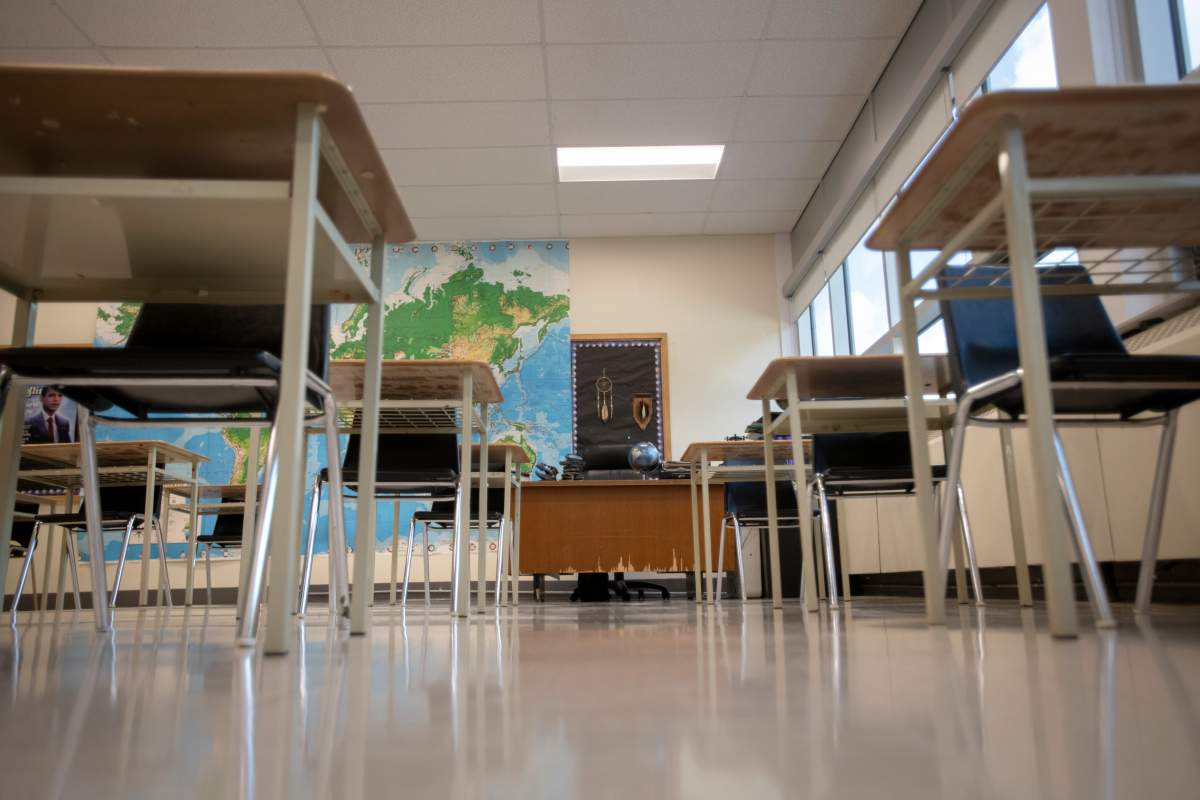More than 950 violent incidents were reported across some schools in London, Ont., and the surrounding region last month.

According to a weekly update from the Elementary Teachers’ Federation of Ontario (ETFO) Thames Valley released on Friday, there were 958 violent incidents reported in October, with more than 700 of them involving the use of an object.
Craig Smith, president of ETFO Thames Valley, told Global News that those figures are up from 512 violent incidents reported in September.
“In May, we had 599 reports and around 500 in June,” he said. “There are the usual workplace hazards that the teachers can suffer, like slips, trips and falls, (but) those are not acts of violence. These reports are interactions mostly with students.”
Smith called the most recent figures a “troubling increase,” adding that “in 20-plus years that I’ve been involved in this line of work, I’ve never seen numbers like that.”
“It’s not only a safety issue, but on a deeper level as well, it’s soul-destroying for teachers,” Smith continued. “It’s also got to be difficult for students who are not involved and immersed in these situations on a daily basis and are bearing witness to these incidents.”

Get breaking National news
He added that while there is a noticeable increase in these incidents, he also believes that more incidents are also being reported.
- Hundreds of public sector workers warned their jobs could be cut: union
- Carney, Trump and Sheinbaum talk trade in Washington at FIFA World Cup draw
- Health Canada recalls glucose monitors that may give ‘incorrect’ readings
- ‘Patients get relief’: Researchers recommending nerve blockers to treat migraines
“We know that incidents of violence are usually underreported, but we think there’s more reporting happening,” he said. “But we need to do something about this pretty fast.
“Schools are meant to be safe places for teachers to work, and safe places for students to learn and right now, that kind of goal is being challenged by these numbers.”
According to Smith, there is a provincial requirement for school boards to have progressive disciplinary policies when it comes to intervening in violent situations. But the problem has to do with “inconsistency of application.”
“It’s there to provide structure and support for the students who may be at the centre of acts of violence and also support for students or staff who may or are on the receiving end of it,” he explained. “It’s not meant to be harsh, judgmental or authoritarian, but we do need a concrete structure in place that will allow us to provide needed support.”
Smith added that with regard to increased violence, “there is no one magic solution to this.”
“The violence that we experience, both in the broader society, which is reflected to some extent in schools, is a complicated set of problems,” he said. “What I think it really requires is an honest and open discussion about what’s going on, day in and day out, throughout our district and frankly, throughout the province.
“We also need to have all of the parties at the table,” Smith continued. “We need the government, school boards, we need the federations, we need the parents to come together and create basic rules we’ve been advocating for a number of years.
“We need a concrete, measurable and supported application of an anti-violence action plan that is supported from the ministry level down not just with words or with good intentions, but with cold, hard resources that will stabilize our schools and get them back on track.”
The recent figures come as Ontario’s education minister said Tuesday that the government has reached a tentative deal with the ETFO.
Details of the deal, which still needs to be ratified by members, have yet to be made public. However, the union said it had been the longest round of central bargaining in its history.
The province had previously indicated compensation was one sticking point, while the union listed demands around in-classroom supports as a key concern.
– with files from Global News’ Mike Stubbs, Isaac Callan and Colin D’Mello.











Comments